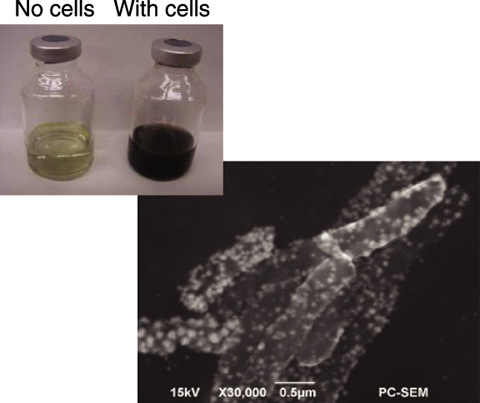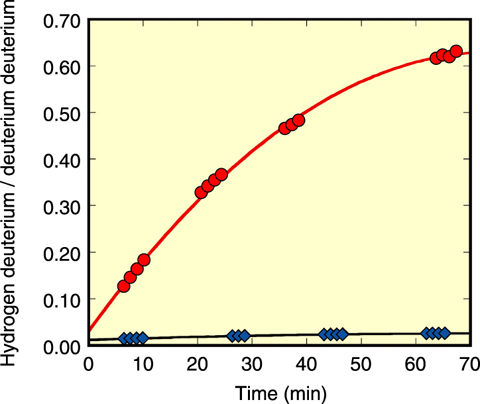
Fig.7-8 Photographs of platinic acid solution with and without iron reducing bacteria (upper left),
and SEM of iron reducing bacteria after exposure to a platinic acid solution (lower right).

Fig.7-9 Time course of HD/D2 ratios in gas passed through columns containing biogenic (●) and abiotic Pt nanoparticles
We developed a new biological technique to form nanoparticles (smaller than 1/10000 mm) of platinum and palladium using iron reducing microorganisms.
How nanoparticles can be applied depends on diverse magnetic, electronic, and optical properties, which vary on the basis of their shape, size, and composition. The platinum-group metals (PGM) comprising palladium, platinum, and rhodium have been used in the industrial production of fuel cells, as catalytic converters to reduce gaseous emissions in vehicle exhausts, and in the catalytic separation of hydrogen isotopes.
Microorganisms posses various functions for obtaining energy. In particular, the functions of metal ion accumulation and selection have been applied to the recovery and separation of actinides in the nuclear fuel reprocessing process and in the evolution of a mathematical model for estimating migration of actinides in groundwater.
In this study, PGM ions were recovered by means of reductive precipitation by iron reducing bacteria. We found that platinum and palladium chloride ions were reduced to form nanoparticles by electron transfer from the bacteria, as expressed by the following equations.
PdCl42- + 4e- + 2H2O → Pd (prep) + 4HCl + O2
PtCl64- + 6e- + 3H2O → Pt (prep) + 6HCl + 3/2O2
SEM observation showed the formation of nanoparticles containing PGMs on the cell surface (Fig.7-8). XRD and XAFS analyses indicated that the oxidation state of the PGMs was 0 and that the crystal form was face centered cubic.
We applied these biogenic PGM nanoparticles to the catalysis of hydrogen isotope exchange. The results showed a formation ratio of HD from H2 and D2 mixed gas approximately 6 times higher than with nanoparticles formed abiotically (Fig.7-9). The iron reducing bacteria alone did not cause the hydrogen isotope exchange. These results are the first indication that biogenic Pt nanoparticles formed on the cells of iron reducing bacteria have high catalytic activity in the exchange of hydrogen isotopes.